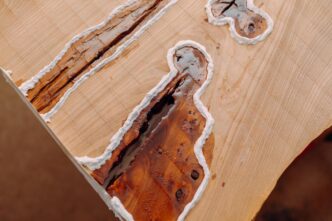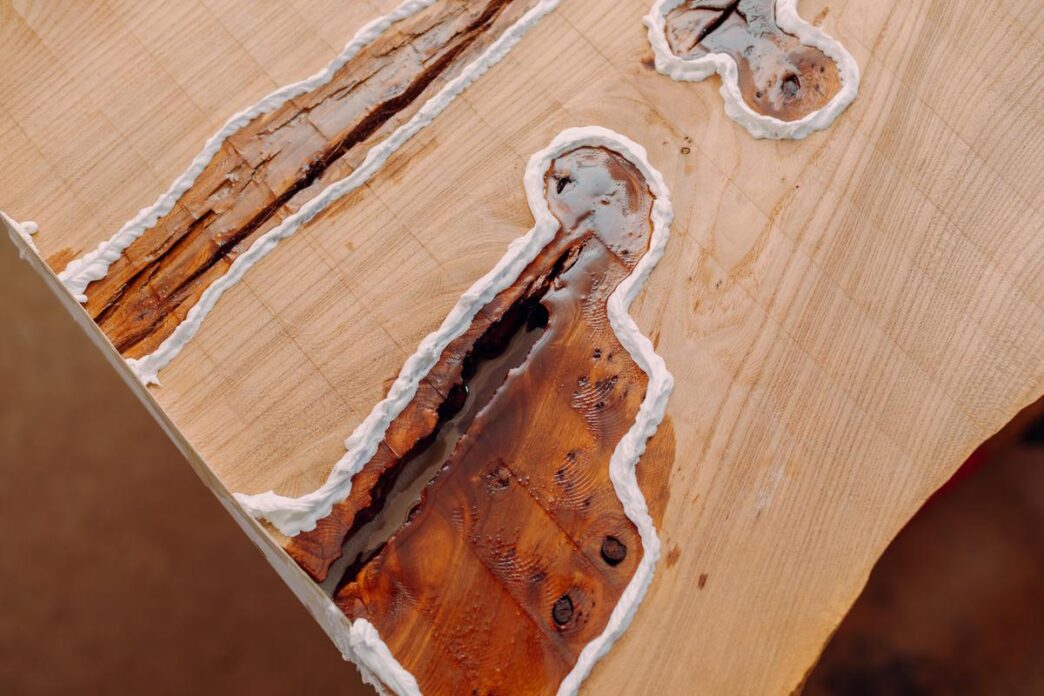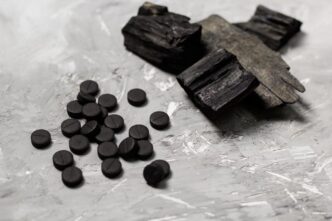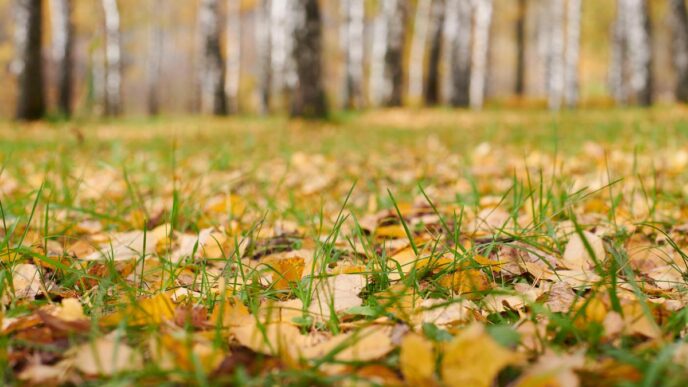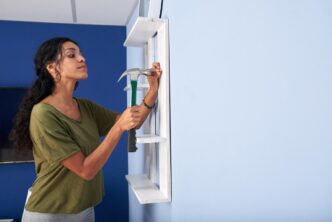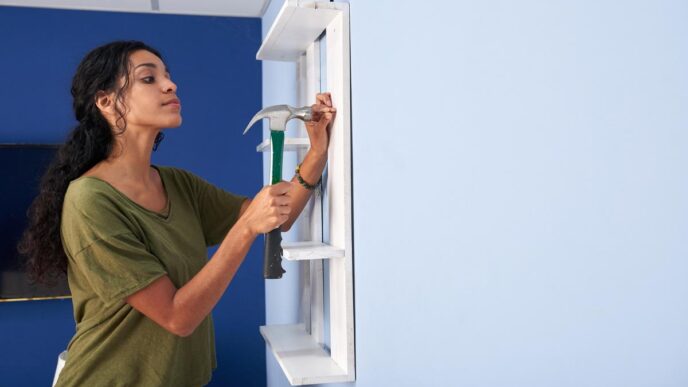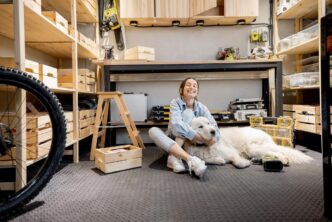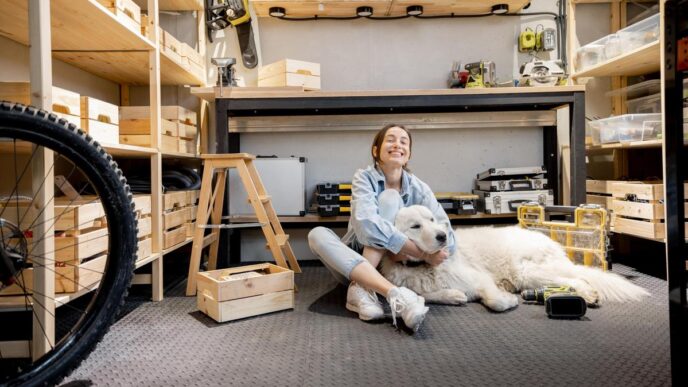Key Takeaways:
- High humidity and poor ventilation cause mold growth on furniture.
- Wood, fabric, and leather materials are prone to mold due to moisture absorption.
- Good indoor air quality and ventilation help prevent mold development.
- Signs of mold include musty smells and discoloration, such as green, black, or white fuzz.
- DIY mold removal options include vinegar, dish soap, and hydrogen peroxide.
- Professional services might be needed for extensive mold infestations.
- Leather furniture can be protected with commercial cleaners or vinegar solutions; conditioning is crucial post-cleaning.
- Regular air circulation, dehumidifiers, and mold-resistant treatments help prevent future mold growth.
- Mold can damage furniture over time and pose health risks.
- Recommended products: Concrobium for wood, RMR-86 for upholstery, Chamberlain’s Leather Milk for leather. Natural alternatives include vinegar and tea tree oil.
Is there mold lurking on your furniture? You're not alone. Mold on furniture can sneak up on anyone, and it poses real risks to both your home's look and your family's health. High humidity and poor air flow create the perfect storm for mold to thrive. Early detection can save your beloved wooden table or plush couch from damage and avoid potential health issues. Let's dive into where mold hides, how you can spot it, and most importantly, how to tackle and prevent it. Your furniture deserves a fresh, clean life, don't you think?
What Causes Mold on Furniture?
Mold is a common enemy for furniture owners. It can take hold on wooden tables, upholstered sofas, and even leather chairs. Understanding what causes mold on furniture is crucial for both preventing and addressing it.
How Does Humidity Contribute to Mold Growth?
High humidity is a major cause of mold. It creates a damp environment where mold can thrive. Humidity levels over 60% can lead to mold on surfaces like furniture. Poor ventilation adds to this problem by trapping moisture in rooms. Condensation can also contribute. When warm air hits cool surfaces, it creates moisture, an ideal condition for mold growth.
Are Certain Furniture Materials More Prone to Mold?
Different furniture materials have varying risks of mold. Wood, fabric, and leather are all vulnerable but in different ways. Wood, for instance, absorbs moisture easily, making it ripe for mold. Fabrics can hold dampness, which invites mold growth. Leather, while naturally resistant, can suffer in humid conditions. If the area is damp, or there's poor air circulation, these materials become mold breeding grounds.
Why is Maintaining Indoor Air Quality Important?
Good indoor air quality is key in keeping mold at bay. When air quality is poor, it creates an environment where mold can flourish. Circulation of fresh air helps to keep moisture levels balanced. Without this, mold spores can settle and grow on furniture. By using fans and opening windows, you can improve air circulation. This makes it harder for mold to establish itself and spread.
With these insights, you can take better control over mold issues in your home. Recognizing how humidity, material susceptibility, and air quality play a role can guide your prevention strategies. Mastering these aspects can help maintain the beauty and health of your furniture for years to come.
How Can I Identify Mold on My Furniture?
Mold can lurk in your home, sneaky and unseen. It hides on furniture, from outdoor lounger chairs to wooden tables. Spotting mold early can save your furniture and maybe even your health. But how can you tell if it’s there?
What Are Common Signs of Mold on Wood and Upholstery?
To spot mode, look for changes in color. Do you see green, black, or white fuzzy spots? Maybe there is a musty smell? Upholstery can have tiny, moldy dots. Wooden furniture might develop dark or murky patches. Sometimes, these spots look like regular stains, but they are not the same. Stains usually spread evenly. Mold has uneven shapes and fuzzy edges, a bit like nature's messy painting.
How to Recognize Different Types of Mold?
Different mold types have their own look. Black mold, for instance, is dark and slimy. White mold appears powdery, similar to chalk dust. Green mold can be fuzzy like broccoli with a sour smell. Do not mix it up with mildew! Mildew is also from fungi but appears gray or white and has no strong smell. Mildew stays on the surface. Mold grows into the material.
What Potential Health Impacts Should You Look Out For?
Mold might harm more than furniture; it can affect your health too. You could start sneezing more or have itchy eyes. Breathing might get tough, especially if you have asthma. Fun furniture facts aside, don’t ignore these signs. Using a mold detection kit can help confirm the presence of mold at home. They show you if it's just dusty or seriously moldy. Think of them like the furniture’s doctor check-up. If unsure, these kits, easy to use at home, can pinpoint mold issues quickly. Knowing what you face is the first step!
By being on the lookout for these signs, you can act fast. You can remove mold before it turns your beloved pieces into a health hazard. Mold detection isn’t just about furniture preservation. It’s about creating a safer, cleaner space for you and your loved ones.
How Can I Remove Mold from Wooden Furniture?
What DIY Solutions Are Effective for Mold Removal?
To tackle mold yourself, start with vinegar, dish soap, or hydrogen peroxide. These items are safe for most wood surfaces. First, make a cleaning solution. Combine equal parts water and white vinegar. For deeper cleaning, mix a teaspoon of dish soap with a cup of water. Wear gloves to protect your skin during cleaning.
Start by wiping the wood gently with a damp cloth. Next, use the solution on the moldy spots. Let the vinegar sit for an hour before wiping it away. Scrub lightly, so you don't harm the wood. Test your solution on a small area first to ensure it doesn't damage the surface.
If mold still lingers, use hydrogen peroxide. Apply it with a cloth and leave it for a few minutes. Scrub gently and wipe away.
Should Professional Cleaning Services Be Considered?
Sometimes, expert help becomes necessary. If mold covers a large area or if the mold smells strong, consider calling specialists. Mold removal services offer safe and effective cleaning treatments. Experts use techniques that reach into wood's pores, removing mold thoroughly. They have special tools and sprays to destroy deep-set mold. These services ensure that the problem doesn't return.
How to Ensure Wood Furniture is Thoroughly Dried Post-Cleaning?
Drying is crucial after cleaning mold. Mold loves dampness, so drying stops it from coming back. Once you finish cleaning, ensure all moisture is gone. First, wipe the wood with a dry cloth. If weather permits, take the furniture outside to dry in the sun. The sun's warmth helps dry the wood fast without damage.
In cooler months, use a fan to blow air over the furniture. Keep the room door and windows open for cross-ventilation. Avoid using heaters too close—they might warp the wood. Drying might take a few hours to a day, depending on the wood and weather. Once dry, check the furniture to ensure no spots hold moisture.
Remember, regular cleaning and keeping the furniture dry help prevent mold from growing. Routine inspection can catch mold early and save your valued pieces.
What Are the Best Methods for Upholstered Furniture Mold Removal?
Dealing with mold on upholstered items can be tricky. Begin by vacuuming to remove mold spores and loose dirt. Focus on seams, under cushions, and any crevices. Use a vacuum cleaner with a HEPA filter to trap the mold spores effectively. This step reduces mold presence and prepares the surface for cleaning.
Homemade solutions can safely clean your furniture upholstery from mold. Use baking soda and water to tackle musty odors. Baking soda is gentle and won't harm upholstery. For stains, mix white vinegar and water. Test any solution on a small area first to ensure it won't damage the fabric. Gently blot the solution onto the upholstery. Never soak the fabric or rub hard, which can spread spores and damage the fabric.
After cleaning, proper drying is crucial. Mold grows back in moisture, so ensure the furniture dries well. Place it in an area with good air circulation. A fan can help quicken drying. For added effects, sunlight exposure helps disinfect by using natural UV rays. Be cautious with dark fabrics to avoid fading in direct sun. Drying times vary based on material thickness. Cotton or linen may need more hours than quicker-drying synthetics.
To further protect against mold, consider waterproof upholstery treatments. Review current cleaning and drying habits to improve results. For more insight on cleaning approaches, explore various cleaning methods. Remember, regular maintenance and checks prevent mold, keeping your furniture fresh and safe.
How Can Leather Furniture Be Protected from Mold?
Leather furniture is a prized possession, and mold can be its worst enemy. To tackle this, I focus on cleaning and preventive care. Let’s dive into the safe and effective ways to protect leather from mold.
What Cleaning Products Are Safe for Leather?
When cleaning mold off leather furniture, the right products make a difference. You can choose between commercial cleaners or homemade solutions. Commercial leather cleaners are specifically made to protect leather while removing mold. They often contain natural oils that replenish the leather’s moisture, keeping it from cracking.
On the other hand, you can use vinegar and water as a DIY alternative. Mix equal parts of white vinegar and water. It effectively kills mold spores without damaging the leather. But remember, never soak the leather; use a damp cloth to apply the solution.
Application method matters. Whether you pick a commercial cleaner or a vinegar mix, use a soft, lint-free cloth. Gently wipe the affected area without scrubbing, as harsh action might damage the leather. Wipe the leather with a clean, dry cloth afterwards to remove excess moisture.
How Does Conditioning Help Preserve Leather Post-Cleaning?
Conditioning leather is key post-cleaning. Leather conditioners maintain the leather’s quality by keeping it soft and supple. They prevent drying and cracking, which can occur after mold cleaning.
Apply leather conditioner every three to six months. This frequency helps keep the leather hydrated and elastic. Make sure to follow the product instructions for best results. Proper conditioning ensures longevity and keeps your leather piece looking great.
What Preventative Measures Can Be Taken?
Keeping mold off leather requires more than just cleaning. Proper storage and environmental conditions are vital. Store leather furniture in a cool, dry place. Avoid basements or spaces with high humidity, which mold loves.
Keeping your home dry helps. Aim to maintain low humidity around leather goods, ideally between 30% to 50%. Air purifiers or dehumidifiers can help keep these levels steady. Regularly open windows for fresh air flow to discourage mold growth. By combining good cleaning practices with preventative measures, you protect your leather from mold effectively.
What Are Strategies to Prevent Future Mold Growth?
Preventing mold on furniture requires a mix of techniques and regular care. Start with improving air flow in your home. One of the best ways to keep mold away is to keep the air moving. Open windows when you can, and use fans in rooms that feel stuffy. When outside air is too warm or cold, air purifiers and dehumidifiers become your best friends. These tools get rid of moisture, the main culprit for mold.
You need to maintain your furniture often to stop mold. This means cleaning and checking your furniture regularly. A good routine to start with is cleaning surfaces once a month to ensure they stay mold-free. Investing in products designed to keep moisture away, like furniture wax or polish, adds an extra layer of defense. These products help create a barrier that keeps moisture from soaking into your furniture.
Preventive treatments can also keep mold from forming on furniture. Use waterproof sealants on outdoor wooden surfaces to guard against rain or dew. Indoors, some treatments make your furniture resistant to mold. Look for mold-resistant sprays that are safe for wood, fabric, or leather. Regular treatment keeps mold at bay and helps your furniture stay strong and beautiful.
Moisture control is key to preventing mold growth. Keep indoor humidity levels between 30% to 50%. Use a dehumidifier to adjust this if needed. Check for any leaks or water damage, as these provide perfect conditions for mold. Quickly fix any issues you find.
Furniture covers and coasters can also protect wooden surfaces from moisture. Covers shield outdoor furniture from rain and dew, while coasters keep spills from leaving stains. Remember that mold loves to transform wet spots into its new home.
Taking these steps will help you safeguard your home against mold. You want to enjoy your furniture without the fear of mold. By staying proactive with these measures, you can confidently say that mold has no place in your home.
What Should I Know About Long-Term Effects of Mold?
Mold can be sneaky and dangerous in our homes. It doesn’t just make our furniture look bad; it poses real risks, both to our beloved lounges and to our health.
How Does Mold Affect Furniture Durability Over Time?
Mold can weaken your furniture over time, which results in damaged items that may even fall apart. The mold eats away at the material, making it less strong. Wooden tables are especially at risk. The fungus cracks and damages the wood fibers, leaving unsightly damage and affecting their usability. Upholstered pieces are not spared, either. Stains and odors may develop that cleaning can't fix. These outcomes shorten the life of your furniture pieces, making some unsalvageable. You know it's beyond saving when the damage is too deep to repair or it puts your safety at risk.
What Are the Potential Health Risks?
Having mold around for a long time is bad for your health. It is not just gross; it can also cause infections and hurt your lungs, especially if you breathe in the spores for too long. People with asthma or allergies may feel worse, experiencing sneezing and itchy eyes. This exposure to mold should not be ignored because it might lead to chronic illnesses. If you're seeing or feeling signs of mold exposure, it's crucial to act fast. Always fix mold problems quickly to keep your home safe. Ventilation, cleaning, and checking for leaks regularly help keep mold away. Taking early steps means your furnishings stay lovely and your household stays healthy.
What Products Are Recommended for Mold Treatment?
I've tried many products for mold on furniture. Each type of furniture needs special care. Let's look at what works best to remove mold.
Which Commercial Products Stand Out for Mold Removal?
For wood, consider Concrobium Mold Control. It's highly regarded for its effectiveness and safety. On fabrics, RMR-86 is a strong choice. It targets mold stains without harsh effects. Leather users might prefer Chamberlain’s Leather Milk, formulated to clean without harming leather.
Cost and efficiency matter. Though some options like Concrobium might be pricier, they often deliver superior results. Consider what you value most: cost or quick outcomes. Evaluate your furniture needs before buying.
Are There Natural Alternatives for Mold Treatment?
Some people choose natural solutions for mold problems. Eco-friendly options work well for those looking to avoid chemicals. White vinegar is a common choice; it kills mold and is cheap. Tea tree oil mixed with water also fights mold effectively. It's important to understand that while natural treatments can work, they might act more slowly than chemical solutions.
Look for items containing acids and essential oils. These ingredients naturally fight mold, offering a safe way to clean without harsh smells.
What Are Customer Experiences with These Products?
People's reviews offer real insights. Many find commercial options easy to use with great results. For example, users of RMR-86 praise how quickly it removes stains. It's handy for those who don't have much time.
Eco-friendly fans like experimenting with natural fixes. They enjoy having control over the cleaning process with items like lemon juice and vinegar.
Community reviews often recommend testing a small spot first. This avoids possible harm to your furniture. Always use caution and check furniture guides before applying new solutions.
For more insights and home tips, you can explore @nest.out.west on Instagram.
Conclusion
Mold is a persistent problem that affects many types of furniture. We've explored how high humidity and poor air quality foster mold growth. Wood, fabric, and leather are especially vulnerable. Identifying mold early is key to prevention. Use DIY solutions like vinegar for safe cleaning or call professionals for severe cases. Proper drying prevents mold from returning. Protect leather with conditioning and low humidity. Improving ventilation and using preventive treatments can stop mold from taking root. Mold can harm not just your furniture but also your health, so act quickly to keep your home safe.
